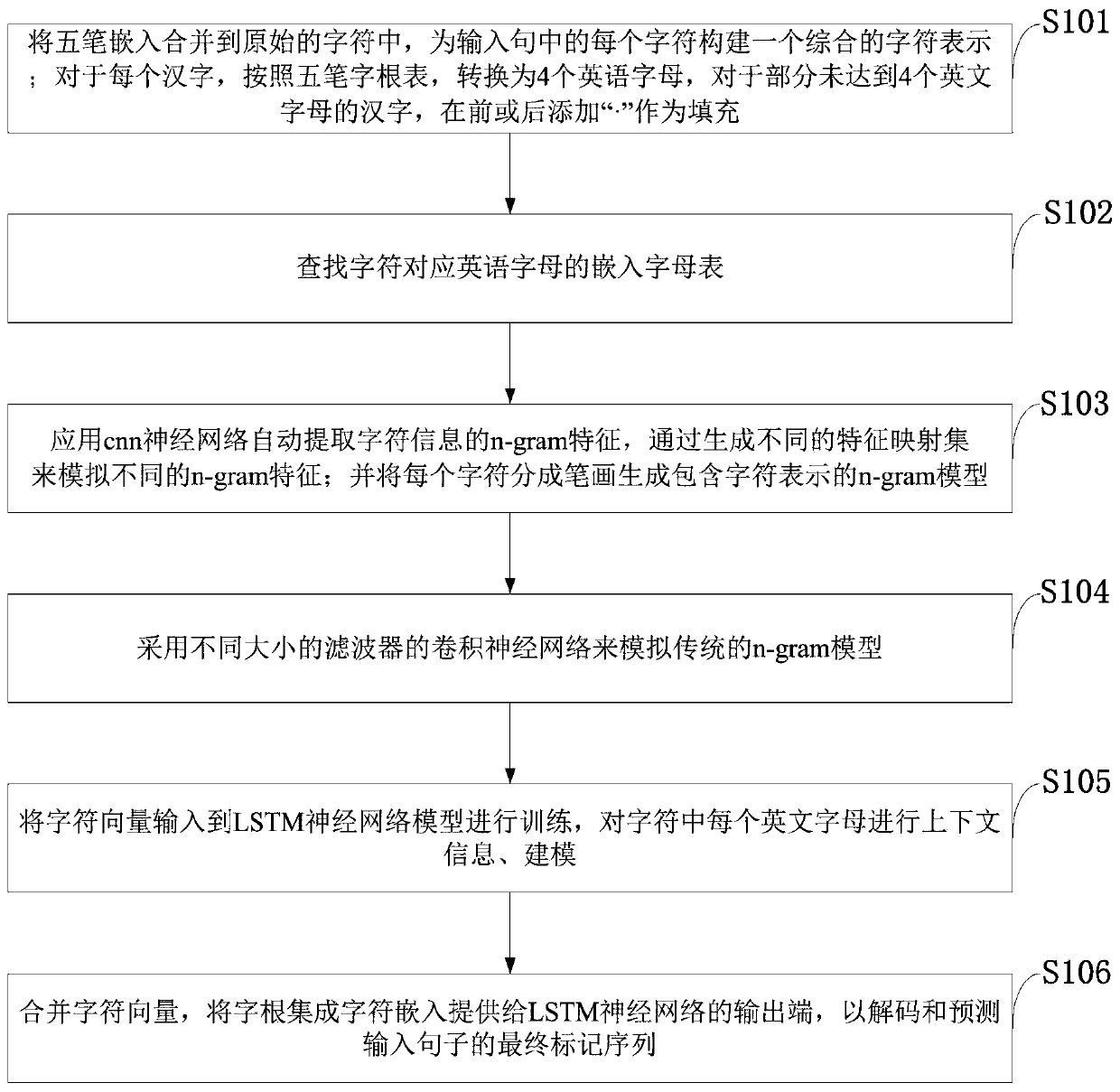Unregistered word identification method and system using five-stroke character root deep learning
A deep learning, unregistered word technology, applied in character and pattern recognition, electrical digital data processing, special data processing applications, etc. Improved accuracy, improved effects
- Summary
- Abstract
- Description
- Claims
- Application Information
AI Technical Summary
Problems solved by technology
Method used
Image
Examples
Embodiment 1
[0054] The present invention is a model combining LSTM and Wubi radicals for the recognition of Chinese named entities. The invention encodes the input character sequence and all potential words matching the Wubi radical dictionary. In contrast to character-based approaches, the present invention explicitly utilizes word and word order information. Gated recurrent units enable the model to select the most relevant characters and words from a sentence to generate better named entity recognition results.
[0055] In terms of input word embedding, the embodiments of the present invention use Wubi radicals to represent Chinese characters, and these representations are combined as character embeddings, which can enhance the exploration of morphological and semantic information of characters, and automatically extract n-gram features with neural networks. Divide each character into strokes to propose an n-gram model, each character is represented by 4 English letters. For differen...
PUM
 Login to View More
Login to View More Abstract
Description
Claims
Application Information
 Login to View More
Login to View More - R&D
- Intellectual Property
- Life Sciences
- Materials
- Tech Scout
- Unparalleled Data Quality
- Higher Quality Content
- 60% Fewer Hallucinations
Browse by: Latest US Patents, China's latest patents, Technical Efficacy Thesaurus, Application Domain, Technology Topic, Popular Technical Reports.
© 2025 PatSnap. All rights reserved.Legal|Privacy policy|Modern Slavery Act Transparency Statement|Sitemap|About US| Contact US: help@patsnap.com


